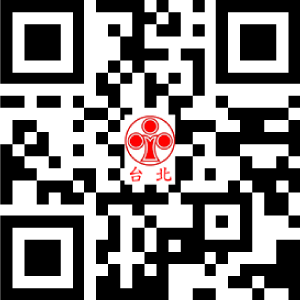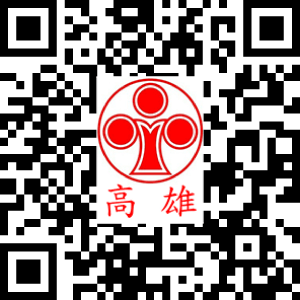More Details
Introduction
The patent linkage system in Taiwan contributes to early settlement of disputes on patent invalidity and infringement between brand drug companies and generic drug companies.1 When filing an abbreviated new drug application (ANDA) for a generic drug by referring to the data of an approved new drug, the ANDA applicant may make a P4-Certification, stating that the patent(s) listed under the marketing approval (MA) of the new drugs shall be revoked, or the generic drug does not infringe the patents.2 After receiving a notification of P4-Certification, the patentee or the exclusive licensee of the patent(s) may file a complaint against the ANDA applicant to prevent patent infringement. At that time, the generic drug has not been launched into the market yet, i.e., no accused product can be publicly obtained. Accordingly, package inserts (describing major ingredients, dosages, administration manners, medical efficacy, functions, indications, etc.) of generic drugs play a critical role in infringement litigations derived from the patent linkage system.
For a patent listed under the MA of a new drug, if the patent seeks protection for medical uses only or the claimed scope of the patent is limited by medical uses (such as the claimed scope of a patent during the period of patent term extension, which is restricted by both the “active ingredient” and “indication” recorded in the MA), an ANDA applicant may consider a skinny label approach, i.e., carving out the corresponding indication (use) from the package insert of the generic drug, to avoid liability for patent infringement. In response to the skinny label approach, the patentee or exclusive licensee may argue that the label in the package of the generic drug will lead doctors to prescribe an off-label use (i.e., prescription of the generic drug for a use disclaimed or not described in the package insert) and thus will induce infringement of the patent.
The following discusses selected landmark judgments of the Taiwan Intellectual Property and Commercial Court (IPCC) and the Taiwan Intellectual Property Court (IPC, the former of the IPCC) for skinny label approaches and disputes about off-label use in patent linkage litigations.
Cases Review
Nonetheless, the court was not convinced by MSD’s contention and deemed that:
The patent linkage system in Taiwan contributes to early settlement of disputes on patent invalidity and infringement between brand drug companies and generic drug companies.1 When filing an abbreviated new drug application (ANDA) for a generic drug by referring to the data of an approved new drug, the ANDA applicant may make a P4-Certification, stating that the patent(s) listed under the marketing approval (MA) of the new drugs shall be revoked, or the generic drug does not infringe the patents.2 After receiving a notification of P4-Certification, the patentee or the exclusive licensee of the patent(s) may file a complaint against the ANDA applicant to prevent patent infringement. At that time, the generic drug has not been launched into the market yet, i.e., no accused product can be publicly obtained. Accordingly, package inserts (describing major ingredients, dosages, administration manners, medical efficacy, functions, indications, etc.) of generic drugs play a critical role in infringement litigations derived from the patent linkage system.
For a patent listed under the MA of a new drug, if the patent seeks protection for medical uses only or the claimed scope of the patent is limited by medical uses (such as the claimed scope of a patent during the period of patent term extension, which is restricted by both the “active ingredient” and “indication” recorded in the MA), an ANDA applicant may consider a skinny label approach, i.e., carving out the corresponding indication (use) from the package insert of the generic drug, to avoid liability for patent infringement. In response to the skinny label approach, the patentee or exclusive licensee may argue that the label in the package of the generic drug will lead doctors to prescribe an off-label use (i.e., prescription of the generic drug for a use disclaimed or not described in the package insert) and thus will induce infringement of the patent.
The following discusses selected landmark judgments of the Taiwan Intellectual Property and Commercial Court (IPCC) and the Taiwan Intellectual Property Court (IPC, the former of the IPCC) for skinny label approaches and disputes about off-label use in patent linkage litigations.
Cases Review

1. IPC 2020 Min-Zhuan-Su-Zi No. 46 Judgment3
(MSD. v CCPC)
China Chemical & Pharmaceutical Co., Ltd. (CCPC), the ANDA applicant, made a P4-Certification when filing an MA application for the generic drug “Ezetity Tablets 10 mg” (wherein the active ingredient is ezetimibe, and the indication is “primary hypercholesterolemia”), asserting that the generic drug did not infringe the two patents, TWI337076 and TWI337083, registered under the MA of the new drug “Ezetrol Tablets 10mg” (wherein the active ingredient is ezetimibe, and the indication is “homozygous sitosterolemia”). After receiving the notification of the P4 Certification, Merck Sharp & Dohme Corp. (MSD), the patentee of TWI337076 and TWI337083, initiated a lawsuit against CCPC.
For the infringement issue regarding TWI337076, MSD contended that:
(MSD. v CCPC)
China Chemical & Pharmaceutical Co., Ltd. (CCPC), the ANDA applicant, made a P4-Certification when filing an MA application for the generic drug “Ezetity Tablets 10 mg” (wherein the active ingredient is ezetimibe, and the indication is “primary hypercholesterolemia”), asserting that the generic drug did not infringe the two patents, TWI337076 and TWI337083, registered under the MA of the new drug “Ezetrol Tablets 10mg” (wherein the active ingredient is ezetimibe, and the indication is “homozygous sitosterolemia”). After receiving the notification of the P4 Certification, Merck Sharp & Dohme Corp. (MSD), the patentee of TWI337076 and TWI337083, initiated a lawsuit against CCPC.
For the infringement issue regarding TWI337076, MSD contended that:
- The treatment of sitosterolemia and the treatment of primary hypercholesterolemia are based on the same mechanism of action that the active ingredient ezetimibe targets and inhibits the sterol transporter, Niemann-Pick C1-like 1 protein (NPC1L1), responsible for intestinal sterol absorption. Since the package insert of the generic drug clearly indicates the treatment of primary hepercholesterolemia via the mechanism of inhibiting NPC1L1, the generic drug surely can treat sitosterolemia via the same mechanism.
- The clinical data (supporting the treatment of primary hypercholesterolemia) cited by the ANDA applicant also demonstrates that the generic drug is useful in treatment of sitosterolemia.
Nonetheless, the court was not convinced by MSD’s contention and deemed that:
- It is not necessarily true that the indications of drugs can be reasonably inferred from studies on pharmacological mechanisms. The results of human pivotal trials (Phase III clinical trials) are required to confirm the therapeutic efficacy and safety of ezetimibe for the indications.
- As the package insert of the generic drug does not cite the clinical trials for treatment of sitosterolemia, it cannot be confirmed that the generic drug is effective in such treatment.
Hence, the court held that the generic drug did not constitute an infringement of TWI337076 because the indication (primary hypercholesterolemia) in the package insert of the generic drug was clinically distinguishable from the disorder (sitosterolemia) recited in the claims of this patent.
In contrast, for the infringement issue regarding TWI337083, in which the claims describe the use of a pharmaceutical composition comprising ezetimibe for treatment of hypercholesterolemia, although CPCC emphasized the differences in the ratios of the components between the generic drug and the pharmaceutical compositions defined in the claims of this patent, the court judged that the generic drug would infringe the claimed scopes of TWI337083 under the doctrine of equivalents.
2. IPCC 2021 Min-Zhuan-Su-Zi No. 4 Judgment4
(MSD v TSH)
IPCC 2021 Min-Zhuan-Su-Zi No. 4 Judgment also involves MSD’s TWI337076 patent (registered under the MA “Ezetrol Tablets 10mg”).
TSH Biopharm Corporation Ltd. (TSH), the ANDA applicant, made a P4-Certification with a non-infringement declaration for the MA applications of two generic drugs “CretrolⓇTab. 10/10mg” and “CretrolⓇTab. 10/20mg.” Both generic drugs comprise ezetimibe (10 mg) and rosuvastatin calcium (respectively 10 mg and 20 mg) as active ingredients for treatment of “primary hypercholesterolemia (excluding the heterozygous familial type).” In response to TSH’s declaration, MSD filed a complaint against TSH.
In the infringement assessment, the court indicated that: TWI337076 was examined and granted before 2013. Based on the Patent Examination Guidelines (the 2004 version) adopted during the examination of this patent, if a claim defines a product by its use, the use should be regarded as a limitation to the claimed scope. Moreover, in the prosecution history of TWI337076, the patentee highlighted in the reasons for re-examination that the invention is directed to a new use of a known compound. Hence, the scopes of the claims of TWI337076 (describing pharmaceutical compositions for treatment of sitosterolemia) should be limited by the use described therein.
Therefore, since the indication in the package insert of the generic drug (primary hypercholesterolemia) and the disorder in the use described in the claims of TWI337076 (sitosterolemia) were distinguishable, the court determined that the generic drug did not fall within the claimed scopes of TWI337076 for the same reason.
3. IPCC 2021 Min-Zhuan-Su-Zi No. 9 Judgment5
(AZ v TSH)
The aforementioned generic drugs “CretrolⓇTab. 10/10mg” and “CretrolⓇTab. 10/20mg” of TSH also were the subject of another patent linkage litigation.
TWI238720 is registered under the MA “Crestor 10mg Film-Coated Tablets,” and the claims of this patent are directed to pharmaceutical compositions comprising rosuvastatin calcium for use in the treatment of “heterozygous familial hypercholesterolemia.” In order to avoid infringement of this patent, TSH amended the package inserts of the generic drugs to exclude “heterozygous familial hypercholesterolemia” from the original indication (primary hypercholesterolemia). However, the patentee AstraZeneca AB (AZ) still initiated an infringement lawsuit upon receipt of the notification of TSH’s P4-Certification.
During the litigation process, AZ asserted that according to the original package inserts of the generic drugs, where the indication “mixed hyperlipidemia” comprises heterozygous familial hypercholesterolemia, the generic drugs read on the claims of TWI238720. TSH countered that the infringement assessment should be conducted based on the amended package inserts. In view of the active ingredients and indication recited in the amended package inserts, the claims of TWI238720 did not read on “CretrolⓇTab. 10/10mg” and “CretrolⓇTab. 10/20mg” and the doctrine of equivalents was not applicable.
Nonetheless, the court pointed out that whether the drugs fall within the claimed scope of the patent should be determined based on “the therapeutic effects of the drugs derived from the clinical trial results cited in the complete package inserts,” rather than simply on the package inserts. The court considered that the indication in the amended package inserts could not be supported by the cited clinical trial results, and it was impossible to substantially distinguish patients of heterozygous familial hypercholesterolemia from patients of primary hypercholesterolemia in medical treatment practices so that the amended package inserts were not medically reasonable. As a result, the court concluded that TSH’s generic drugs may lead to off-label use and constituted an infringement of TWI238720.
TSH was dissatisfied with the judgment (the first instance judgment) and thus filed an appeal. Ultimately, due to the expiration of the patent term of TWI238720, the judgment was vacated by the second instance court6.
4. IPCC 2023 Min-Zhuan-Su-Zi No. 38 Judgment7
(AZ v. TTY)
In the case of IPCC 2023 Min-Zhuan-Su-Zi No. 38 Judgment, the patent term of TWI259086 (originally expired on January 9, 2021) was extended to January 9, 2026 based on the MA “Faslodex solution for injection 50mg/ml,” where the active ingredient is Fulvestrant and the indication is for the first-line treatment of “estrogen receptor positive, locally advanced or metastatic breast cancer in postmenopausal women not previously treated with endocrine therapy.” During the period of patent term extension (PTE), the scope of the claimed inventions of TWI259086 is limited by the active ingredient and indication recorded in the MA.
TTY Biopharm Company Limited (TTY) filed an MA application for the generic drug “Fustron solution for injection 50 mg/mL,” wherein the active ingredient is Fulvestrant and the indication is for the second-line treatment of “estrogen receptor positive, locally advanced or metastatic breast cancer in postmenopausal women with disease relapse on or after adjuvant antiestrogen therapy, or disease progression on antiestrogen,” on March 23, 2023 and made a P4-Certification of non-infringement of TWI259086.
AZ, the patentee of TWI259086, initiated a patent infringement litigation against TTY. AZ emphasized that the exclusion of “patients not previously treated with endocrine therapy” from the indications of the package insert of the generic drug was obviously not consistent with clinical treatment practices and not medically reasonable in view of the clinical trial results cited in the package insert, the common mechanism of the active ingredient for the first-line and second-line treatments, the proportion of breast cancer patients who are estrogen receptor-positive, and the feasibility and possibility of the off-label uses in medical practices.
The court, however, opined that the indications for second-line treatment or subsequent stage treatment listed in the package insert of the generic drug could be supported by the results of the human clinical trials cited in the package insert. Since the package insert of the generic drug did not cite the results of the clinical trials for the first-line treatment in the MA of the patented drug on which the PTE was based, the package insert of the generic drug was medically rational. The first-line treatment and the second-line or subsequent treatment could be clearly distinguished from each other in clinical trials or in medical practices. This also could be illustrated by the results of the clinical trials submitted when the MA application for the new drug was filed. Said results separately demonstrated the therapeutic effects of the first-line treatment and the second-line treatment.
The court further stated that even if a physician would consider an off-label use of the generic drug and use it in the first-line treatment, the package insert of the generic drug neither cited the results of the clinical trials for the first-line treatment nor taught use of the generic drug for the first-line treatment. Simply based on a physician's individual behavior of off-label use or drug purchasing options or principles for partial medical institutions, it could not be confirmed that the generic drug would induce infringement of the patent during the PTE period.
Overall, the skinny label approach successfully differentiated the drugs from the claimed scopes of the patents in the cases of IPC 2020 Min-Zhuan-Su-Zi No. 46 Judgment, IPCC 2021 Min-Zhuan-Su-Zi No. 4 Judgment and IPCC 2023 Min-Zhuan-Su-Zi No. 38 Judgment but not in the case of IPCC 2021 Min-Zhuan-Su-Zi No. 9 Judgment.
Conclusion
From the aforementioned cases, it can be learned that when the court assesses infringement in patent linkage litigations, in addition to the active ingredient and indication described in the package insert of a generic drug, the results of clinical trials cited in the package insert and medical practices will also be taken into consideration.
When adopting a skinny label strategy, ANDA applicants should pay attention to the consistency between the indications in the package inserts of their generic drugs and the clinical trials cited therein and the feasibility of carving-out the corresponding indications in medical practice. In addition, for invention patents granted after 2013, according to the Patent Examination Guidelines, if a claim defines a product by its use but the use does not imply that the product possesses a specific structure or component, the use does not place any limitation on the product when determining the novelty and inventive step of the product. Thus, the use in a product-by-use claim of a pharmaceutical patent granted after 2013 may not be considered in interpretation of the claimed scope, and a skinny label strategy may not be applicable to circumvent infringement of the scope of the product-by-use claim.
On the other hand, for patentees, it should be noted that the claimed scope of a patent during the PTE period is limited by the active ingredient and indication recited in the MA on which the PTE is based, and the use recited in a product-by-use claim of a patent granted before 2013 may be deemed as a limitation on the claimed scope. Patents of which the claimed scopes are limited by uses may be vulnerable to skinny label approaches by ANDA applicants in the patent linkage system. Also, in response to a skinny label approach, contentions about off-label use solely based on the same pharmacological mechanism for different indications generally will not convince the court. Additional evidence, particularly data of clinical trials or medical practice, is still needed to prove that the generic drug, even where the skinny label carves out the corresponding indication, would still encourage off-label use and induce patent infringement.
In short, even though patent linkage litigations should still be judged on a case-by-case basis, the previous judgments set out bottom-line criteria for infringement assessment in the patent linkage system.
References:
1. https://www.taie.com.tw/en/publications.php?act=view&no=3
2. Article 48-9 of the Pharmaceutical Affairs Act: The applicant for a generic drug permit shall, with respect to the patent(s) of the approved new drug listed by the holder of said new drug permit, declare one of the following item(s) when applying for a generic drug permit:
(1) No patent information of said new drug has been listed.
(2) The patent(s) corresponding to said new drug has extinguished.
(3) The Central Competent Health Authority will issue the generic drug permit after the patent(s) corresponding to said new drug extinguishes.
(4) The patent(s) corresponding to said new drugs shall be revoked, or the patent(s) corresponding to said new drugs will not be infringed by the generic drug subject to the application for drug permit.
3. IPC 2020 Min-Zhuan-Su-Zi No. 46 Judgment in Chinese:
https://judgment.judicial.gov.tw/FJUD/data.aspx?ty=JD&id=IPCV%2c109%2c%e6%b0%91%e5%b0%88%e8%a8%b4%2c46%2c20201231%2c2&ot=in
4. IPCC 2021 Min-Zhuan-Su-Zi No. 4 Judgment in Chinese:
https://judgment.judicial.gov.tw/FJUD/data.aspx?ty=JD&id=IPCV%2c110%2c%e6%b0%91%e5%b0%88%e8%a8%b4%2c4%2c20211022%2c2&ot=in
5. IPCC 2021 Min-Zhuan-Su-Zi No. 9 Judgment in Chinese:
https://judgment.judicial.gov.tw/FJUD/data.aspx?ty=JD&id=IPCV%2c110%2c%e6%b0%91%e5%b0%88%e8%a8%b4%2c9%2c20211026%2c2&ot=in
6. IPCC 2022 Min-Zhuan-Shang-Zi No. 9 Judgment in Chinese:
https://judgment.judicial.gov.tw/FJUD/data.aspx?ty=JD&id=IPCV%2c111%2c%e6%b0%91%e5%b0%88%e4%b8%8a%2c9%2c20220721%2c2
7. IPCC 2023 Min-Zhuan-Su-Zi No. 38 Judgment in Chinese:
https://judgment.judicial.gov.tw/FJUD/data.aspx?ty=JD&id=IPCV%2c112%2c%e6%b0%91%e5%b0%88%e8%a8%b4%2c38%2c20240123%2c2&ot=in
In contrast, for the infringement issue regarding TWI337083, in which the claims describe the use of a pharmaceutical composition comprising ezetimibe for treatment of hypercholesterolemia, although CPCC emphasized the differences in the ratios of the components between the generic drug and the pharmaceutical compositions defined in the claims of this patent, the court judged that the generic drug would infringe the claimed scopes of TWI337083 under the doctrine of equivalents.
2. IPCC 2021 Min-Zhuan-Su-Zi No. 4 Judgment4
(MSD v TSH)
IPCC 2021 Min-Zhuan-Su-Zi No. 4 Judgment also involves MSD’s TWI337076 patent (registered under the MA “Ezetrol Tablets 10mg”).
TSH Biopharm Corporation Ltd. (TSH), the ANDA applicant, made a P4-Certification with a non-infringement declaration for the MA applications of two generic drugs “CretrolⓇTab. 10/10mg” and “CretrolⓇTab. 10/20mg.” Both generic drugs comprise ezetimibe (10 mg) and rosuvastatin calcium (respectively 10 mg and 20 mg) as active ingredients for treatment of “primary hypercholesterolemia (excluding the heterozygous familial type).” In response to TSH’s declaration, MSD filed a complaint against TSH.
In the infringement assessment, the court indicated that: TWI337076 was examined and granted before 2013. Based on the Patent Examination Guidelines (the 2004 version) adopted during the examination of this patent, if a claim defines a product by its use, the use should be regarded as a limitation to the claimed scope. Moreover, in the prosecution history of TWI337076, the patentee highlighted in the reasons for re-examination that the invention is directed to a new use of a known compound. Hence, the scopes of the claims of TWI337076 (describing pharmaceutical compositions for treatment of sitosterolemia) should be limited by the use described therein.
Therefore, since the indication in the package insert of the generic drug (primary hypercholesterolemia) and the disorder in the use described in the claims of TWI337076 (sitosterolemia) were distinguishable, the court determined that the generic drug did not fall within the claimed scopes of TWI337076 for the same reason.
3. IPCC 2021 Min-Zhuan-Su-Zi No. 9 Judgment5
(AZ v TSH)
The aforementioned generic drugs “CretrolⓇTab. 10/10mg” and “CretrolⓇTab. 10/20mg” of TSH also were the subject of another patent linkage litigation.
TWI238720 is registered under the MA “Crestor 10mg Film-Coated Tablets,” and the claims of this patent are directed to pharmaceutical compositions comprising rosuvastatin calcium for use in the treatment of “heterozygous familial hypercholesterolemia.” In order to avoid infringement of this patent, TSH amended the package inserts of the generic drugs to exclude “heterozygous familial hypercholesterolemia” from the original indication (primary hypercholesterolemia). However, the patentee AstraZeneca AB (AZ) still initiated an infringement lawsuit upon receipt of the notification of TSH’s P4-Certification.
During the litigation process, AZ asserted that according to the original package inserts of the generic drugs, where the indication “mixed hyperlipidemia” comprises heterozygous familial hypercholesterolemia, the generic drugs read on the claims of TWI238720. TSH countered that the infringement assessment should be conducted based on the amended package inserts. In view of the active ingredients and indication recited in the amended package inserts, the claims of TWI238720 did not read on “CretrolⓇTab. 10/10mg” and “CretrolⓇTab. 10/20mg” and the doctrine of equivalents was not applicable.
Nonetheless, the court pointed out that whether the drugs fall within the claimed scope of the patent should be determined based on “the therapeutic effects of the drugs derived from the clinical trial results cited in the complete package inserts,” rather than simply on the package inserts. The court considered that the indication in the amended package inserts could not be supported by the cited clinical trial results, and it was impossible to substantially distinguish patients of heterozygous familial hypercholesterolemia from patients of primary hypercholesterolemia in medical treatment practices so that the amended package inserts were not medically reasonable. As a result, the court concluded that TSH’s generic drugs may lead to off-label use and constituted an infringement of TWI238720.
TSH was dissatisfied with the judgment (the first instance judgment) and thus filed an appeal. Ultimately, due to the expiration of the patent term of TWI238720, the judgment was vacated by the second instance court6.
4. IPCC 2023 Min-Zhuan-Su-Zi No. 38 Judgment7
(AZ v. TTY)
In the case of IPCC 2023 Min-Zhuan-Su-Zi No. 38 Judgment, the patent term of TWI259086 (originally expired on January 9, 2021) was extended to January 9, 2026 based on the MA “Faslodex solution for injection 50mg/ml,” where the active ingredient is Fulvestrant and the indication is for the first-line treatment of “estrogen receptor positive, locally advanced or metastatic breast cancer in postmenopausal women not previously treated with endocrine therapy.” During the period of patent term extension (PTE), the scope of the claimed inventions of TWI259086 is limited by the active ingredient and indication recorded in the MA.
TTY Biopharm Company Limited (TTY) filed an MA application for the generic drug “Fustron solution for injection 50 mg/mL,” wherein the active ingredient is Fulvestrant and the indication is for the second-line treatment of “estrogen receptor positive, locally advanced or metastatic breast cancer in postmenopausal women with disease relapse on or after adjuvant antiestrogen therapy, or disease progression on antiestrogen,” on March 23, 2023 and made a P4-Certification of non-infringement of TWI259086.
AZ, the patentee of TWI259086, initiated a patent infringement litigation against TTY. AZ emphasized that the exclusion of “patients not previously treated with endocrine therapy” from the indications of the package insert of the generic drug was obviously not consistent with clinical treatment practices and not medically reasonable in view of the clinical trial results cited in the package insert, the common mechanism of the active ingredient for the first-line and second-line treatments, the proportion of breast cancer patients who are estrogen receptor-positive, and the feasibility and possibility of the off-label uses in medical practices.
The court, however, opined that the indications for second-line treatment or subsequent stage treatment listed in the package insert of the generic drug could be supported by the results of the human clinical trials cited in the package insert. Since the package insert of the generic drug did not cite the results of the clinical trials for the first-line treatment in the MA of the patented drug on which the PTE was based, the package insert of the generic drug was medically rational. The first-line treatment and the second-line or subsequent treatment could be clearly distinguished from each other in clinical trials or in medical practices. This also could be illustrated by the results of the clinical trials submitted when the MA application for the new drug was filed. Said results separately demonstrated the therapeutic effects of the first-line treatment and the second-line treatment.
The court further stated that even if a physician would consider an off-label use of the generic drug and use it in the first-line treatment, the package insert of the generic drug neither cited the results of the clinical trials for the first-line treatment nor taught use of the generic drug for the first-line treatment. Simply based on a physician's individual behavior of off-label use or drug purchasing options or principles for partial medical institutions, it could not be confirmed that the generic drug would induce infringement of the patent during the PTE period.
Overall, the skinny label approach successfully differentiated the drugs from the claimed scopes of the patents in the cases of IPC 2020 Min-Zhuan-Su-Zi No. 46 Judgment, IPCC 2021 Min-Zhuan-Su-Zi No. 4 Judgment and IPCC 2023 Min-Zhuan-Su-Zi No. 38 Judgment but not in the case of IPCC 2021 Min-Zhuan-Su-Zi No. 9 Judgment.
Conclusion
From the aforementioned cases, it can be learned that when the court assesses infringement in patent linkage litigations, in addition to the active ingredient and indication described in the package insert of a generic drug, the results of clinical trials cited in the package insert and medical practices will also be taken into consideration.
When adopting a skinny label strategy, ANDA applicants should pay attention to the consistency between the indications in the package inserts of their generic drugs and the clinical trials cited therein and the feasibility of carving-out the corresponding indications in medical practice. In addition, for invention patents granted after 2013, according to the Patent Examination Guidelines, if a claim defines a product by its use but the use does not imply that the product possesses a specific structure or component, the use does not place any limitation on the product when determining the novelty and inventive step of the product. Thus, the use in a product-by-use claim of a pharmaceutical patent granted after 2013 may not be considered in interpretation of the claimed scope, and a skinny label strategy may not be applicable to circumvent infringement of the scope of the product-by-use claim.
On the other hand, for patentees, it should be noted that the claimed scope of a patent during the PTE period is limited by the active ingredient and indication recited in the MA on which the PTE is based, and the use recited in a product-by-use claim of a patent granted before 2013 may be deemed as a limitation on the claimed scope. Patents of which the claimed scopes are limited by uses may be vulnerable to skinny label approaches by ANDA applicants in the patent linkage system. Also, in response to a skinny label approach, contentions about off-label use solely based on the same pharmacological mechanism for different indications generally will not convince the court. Additional evidence, particularly data of clinical trials or medical practice, is still needed to prove that the generic drug, even where the skinny label carves out the corresponding indication, would still encourage off-label use and induce patent infringement.
In short, even though patent linkage litigations should still be judged on a case-by-case basis, the previous judgments set out bottom-line criteria for infringement assessment in the patent linkage system.
References:
1. https://www.taie.com.tw/en/publications.php?act=view&no=3
2. Article 48-9 of the Pharmaceutical Affairs Act: The applicant for a generic drug permit shall, with respect to the patent(s) of the approved new drug listed by the holder of said new drug permit, declare one of the following item(s) when applying for a generic drug permit:
(1) No patent information of said new drug has been listed.
(2) The patent(s) corresponding to said new drug has extinguished.
(3) The Central Competent Health Authority will issue the generic drug permit after the patent(s) corresponding to said new drug extinguishes.
(4) The patent(s) corresponding to said new drugs shall be revoked, or the patent(s) corresponding to said new drugs will not be infringed by the generic drug subject to the application for drug permit.
3. IPC 2020 Min-Zhuan-Su-Zi No. 46 Judgment in Chinese:
https://judgment.judicial.gov.tw/FJUD/data.aspx?ty=JD&id=IPCV%2c109%2c%e6%b0%91%e5%b0%88%e8%a8%b4%2c46%2c20201231%2c2&ot=in
4. IPCC 2021 Min-Zhuan-Su-Zi No. 4 Judgment in Chinese:
https://judgment.judicial.gov.tw/FJUD/data.aspx?ty=JD&id=IPCV%2c110%2c%e6%b0%91%e5%b0%88%e8%a8%b4%2c4%2c20211022%2c2&ot=in
5. IPCC 2021 Min-Zhuan-Su-Zi No. 9 Judgment in Chinese:
https://judgment.judicial.gov.tw/FJUD/data.aspx?ty=JD&id=IPCV%2c110%2c%e6%b0%91%e5%b0%88%e8%a8%b4%2c9%2c20211026%2c2&ot=in
6. IPCC 2022 Min-Zhuan-Shang-Zi No. 9 Judgment in Chinese:
https://judgment.judicial.gov.tw/FJUD/data.aspx?ty=JD&id=IPCV%2c111%2c%e6%b0%91%e5%b0%88%e4%b8%8a%2c9%2c20220721%2c2
7. IPCC 2023 Min-Zhuan-Su-Zi No. 38 Judgment in Chinese:
https://judgment.judicial.gov.tw/FJUD/data.aspx?ty=JD&id=IPCV%2c112%2c%e6%b0%91%e5%b0%88%e8%a8%b4%2c38%2c20240123%2c2&ot=in








